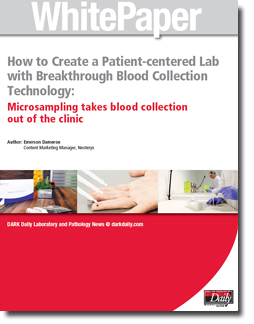 Patient-centered care (also known as a “patient-centric” approach to medicine) represents a paradigm shift in how patients and providers think about the processes of treatment and healing. Patient-centric care can lead to increased comfort and convenience, leading to a better patient experience—which in turn leads to improved adherence and compliance. Improved patient compliance is of course an essential contributing factor to the ultimate goal—enhanced treatment efficiency and safety, and better clinical outcomes.
Patient-centered care (also known as a “patient-centric” approach to medicine) represents a paradigm shift in how patients and providers think about the processes of treatment and healing. Patient-centric care can lead to increased comfort and convenience, leading to a better patient experience—which in turn leads to improved adherence and compliance. Improved patient compliance is of course an essential contributing factor to the ultimate goal—enhanced treatment efficiency and safety, and better clinical outcomes.
More researchers and technicians, and the clinicians who rely upon them, are adopting and adapting patient-centric technologies to improve the quality of patient care and thus support enhanced clinical outcomes. Included in this proliferation of new technologies are those based on concept of remote patient monitoring (RPM).
Remote patient monitoring makes many aspects of healthcare less invasive and intrusive for patients. Patients can participate in their care from the comfort and privacy of their own homes. Expenses associated with healthcare travel and long wait times are minimized. Patients take more control over their treatment, maintain greater stability, and are often happier than those who need to travel to have illnesses and chronic conditions monitored. This approach is proving so beneficial for both patients and healthcare professionals, it has touched off a new wave of innovation—that of remote blood sampling using microsampling technology.
Microsampling technology, which can be easily used by patients themselves, is less invasive than traditional blood collection, is well-suited for children, and an option for individuals who experience needle anxiety. From the perspective of those collecting and analyzing samples, microsampling technology provides a reliable and economical collection, shipping and storage solution, as well as new opportunities to gather stable samples in low-resource regions.
The Dark Report is pleased to offer this FREE White Paper—“How to Create a Patient-centered Lab with Breakthrough Blood Collection Technology: Microsampling takes blood collection out of the clinic” that will provide you with valuable and informative insights on how the field-changing technology of microsampling can answer your challenges of changing remote patient requirements.
This White Paper provides you with a detailed discussion regarding:
- How Volumetric Absorptive Microsampling (VAMS™) technology was developed to solve for the limitations of the old, familiar versions of dried blood sampling technology
- How new microsampling technology can be performed in such a way that, unlike older technologies, can ensure consistency and accuracy
- What the new technology looks like, how it is configured, and design details that make it readily adoptable by labs, clinicians, and patients alike
- Ways in which new microsampling technology facilitates a more patient-centric lab, and provides a user-friendly alternative to older, more intrusive or cumbersome methods
- Technical evidence for efficacy substantiating the benefits and utility of new microsampling technology for applications such as therapeutic drug monitoring and remote specimen collection
- A practical, step-by-step roadmap to new microsampling technology adoption, deployment and success
White Paper Table of Contents
Chapter 1: The Rise of Patient-centered Care
Chapter 2: The Rise of Remote Patient Monitoring
Chapter 3: So, What is Microsampling, Exactly?
Chapter 4: The Volumetric Hematocrit Bias
Chapter 5: VAMS™: What It Is and How It Works
Chapter 6: Microsampling: Preferred by Patients
Chapter 7: The Road to Deployment: A Tested Step-by-Step Customer Roadmap
Chapter 8: Frequently Asked Questions
For those interested in new microsampling technology, what it is and how it works, this White Paper is the ideal resource. Download your FREE copy of “How to Create a Patient-centered Lab with Breakthrough Blood Collection Technology: Microsampling takes blood collection out of the clinic” now.
Download the White Paper now by completing the form below.
Access to some white papers may require registration. In exchange for providing this free content, we may share your information with the companies whose content you choose to view. By accessing the white paper, you’re agreeing to our Terms of Service and Privacy Policy.




